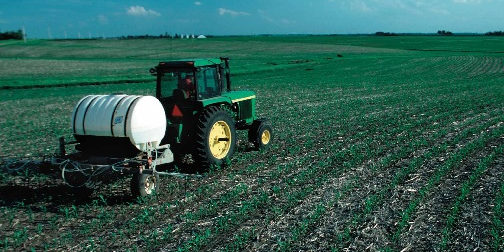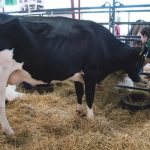Know where fall nitrogen fertilizer applications are restricted
ST. PAUL — As the seasons change, the Minnesota Department of Agriculture (MDA) encourages farmers and commercial applicators to know where fall nitrogen fertilizer applications are restricted.
Fall nitrogen fertilizer application is not recommended in all areas of the state due to environmental concerns or risks. Areas with coarse-textured soils or areas above fractured bedrock or karst geology are the most vulnerable to nitrate loss and groundwater contamination. As of September 1, 2020, fall nitrogen fertilizer application in these vulnerable regions is not allowed under the MDA’s Groundwater Protection Rule. View a map of the vulnerable regions of the state.
In other areas of the state where fall nitrogen fertilizer application is allowed, be patient and wait for cooler conditions. Check the soil temperatures and delay fall application of anhydrous ammonia and urea fertilizer, as well as manure, until the average soil temperatures reach 50 degrees F or cooler. This helps prevent nitrogen loss, protect water quality, and ensure more nitrogen will be available for next season’s crop.
To assist tracking soil temperature, the MDA provides real-time, 6-inch soil temperatures at 25 locations across the state. In addition, the MDA provides links to soil temperature from the University of Minnesota research stations and the North Dakota Ag Weather Network (NDAWN) weather stations. View the interactive map to find the current 6-inch soil temperature and the past week’s history.
At cooler temperatures, the incorporated nitrogen fertilizer is less likely to be converted to water soluble nitrate. This decrease happens because the microbes in the soil that convert ammonium to nitrate are less active in cooler temperatures. Less activity and less conversion mean more ammonium will remain in the soil. Once ammonium is converted to nitrate, it can be moved by water percolating through the soil, leaching out of the root zone. This commonly occurs in late to early spring when soils thaw.
Although the soil temperature network was established to support application of nitrogen fertilizer, it is equally useful for those applying manure in the fall. University of Minnesota Extension recommends the same temperature delay (6-inch soil temperature below 50 degrees F) to prevent leaching losses. Research from the University of Minnesota showed liquid dairy and hog manure injected in November produced yields 10 bushels per acre higher than manure injected in September and October.
Last modified: 09/29/2020














